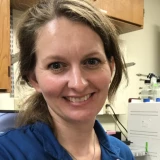
Company Biography
Click on the 'Resources' tab to download the ePoster and SciTalk.
A novel coronavirus antibody binding a conserved neutralizing epitope on the spike S2 domain
Annalee W. Nguyen (1), Yimin Huang (2), Ching-Lin Hsieh (2), Rui Silva (2), Oladimeji S. Olaluwoye (4), Rebecca Wilen (1), Tamer Kaoud (3), Laura R. Azouz (1), Ahlam Qerqez (1), Kevin C. Le (1), Andrea M. DiVenere (1), Yutong Liu (1), Alison Lee (2), Dzifa Amengor (2), Kevin Dalby (3), Sheena D’Arcy (4), Jason S. McLellan (2,5), Jennifer A. Maynard (1,5)
(1) Department of Chemical Engineering, The University of Texas, Austin, TX 78712, USA.
(2) Department of Molecular Biosciences, The University of Texas, Austin, TX 78712, USA.
(3) Division of Chemical Biology and Medicinal Chemistry, The University of Texas, Austin, TX 78712, USA.
(4) Department of Chemistry and Biochemistry, The University of Texas, Dallas, TX 75080, USA.
(5) LaMontagne Center for Infectious Diseases, The University of Texas, Austin, TX 78712, USA.
The SARS-2 coronavirus spike protein, which is responsible for viral fusion and entry into target cells, has been a major focus of vaccination and therapeutic development efforts. These primarily target epitopes in the receptor binding domain within the S1 subunit of the spike. The S1 subunit has high sequence and structural variability across coronaviruses, which means a different product is needed for every coronavirus strain. However, the S2 stem is much more highly conserved, and cross-reactive immune responses to this region can protect against COVID-19. In an effort to support development of pan-coronavirus antibodies and vaccines, we have isolated three antibodies that bind the S2 domain of SARS-2, SARS-1, and MERS spike protein from mice immunized with a pre-fusion stabilized MERS S2 antigen. One of these antibodies, 3A3, neutralizes spike activity in both a mammalian cell fusion assay and a pseudovirus infection assay. 3A3 binds a highly conserved conformational epitope identified by HDX-MS and loses binding when the SARS-2 spike is stressed and misfolds. These S2 binding antibodies are promising as therapeutic and quality control reagents, and can guide vaccine development for protection against existing and future coronavirus disease.
contact: annalee@utexas.edu
Contact Information
Austin, TX 78712-1589